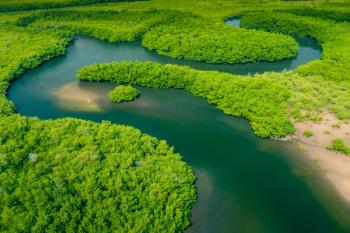
Using Spectroscopy to Tackle Climate Change
Scientists at the Analytica conference in Munich, Germany delivered lectures on using techniques such as Raman and tunable diode laser absorption spectroscopy to analyze gas in the environment.
On April 9, multiple experts spoke at Analytica in Munich, Germany about how new gas sensors can help address the needs of energy transitions. The session was chaired by Bernhard Lendl, professor of analytical chemistry from the Vienna University of Technology in Austria.
Sensing technology can help scientists better detect specific gases in the environment. This is particularly timely topic as scientists work to develop better strategies for addressing environmental challenges like climate change. The combined land and ocean temperature has increased at an average rate of 0.11 ºF (0.06° Celsius) per decade since 1850,
The first talk in this session was delivered by Peter Geiser, chief technology officer of NEO Monitors. Geiser’s lecture focused on decarbonization of industrial processes and using hydrogen (H2) as a viable alternative to carbon in manufacturing. He presents tunable diode laser absorption spectroscopy (TDLAS) as a viable tool for gas analysis. TDLAS has well known advantages, he said, including its fast response time, high reliability, selectivity, and sensitivity. TDLAS is a potential option for measuring H2 in natural gases, Geiser said. The method can be used to determine calorific values and quantifying impurities in H2.
Marc Winter, a product manager at Endress+Hauser, delivered a presentation on Raman gas analysis for energy transition. Winter’s presentation highlighted examples of how Raman spectroscopy can help with gas measurement and analysis. He provided an example of how a Raman Rxn5 analyzer coupled with a Rxn-30 probe was used to for the gas-phase measurement enabling tighter control of the hydrogen blending process. The combination of the probe and analyzer was also used in the feed control of ammonia process. The technique demonstrated high selectivity, allowing tight control of the feed stream, he said.
Read More:
During another talk in this session, Paolo De Natale, of the National Research Council (CNR) in Italy, spoke about tackling global warming with saturated-absorption cavity ring down spectroscopy (SCAR). SCAR, he said, is a powerful tool for measuring the ratio of bio and fossil fraction in fuel, below the natural abundance in the biosphere. The methods dynamic range, according to Natale, could be used to discriminate between materials with different levels of exposure to irradiation, compared accelerator mass spectrometry (AMS). Natale and his team is testing ultra-compact SCAR configurations for biomedical applications and purification methods of carbon dioxide from atmospheric samples. This analysis, he said, could make it possible to use SCAR to help tackle climate change.
The session ended with a lecture from Johannes Waclawek, also from the Vienna University of Technology in Austria. Waclawek spoke about balanced detection interferometric cavity-assisted photothermal spectroscopy for compact gas detection.
Newsletter
Get essential updates on the latest spectroscopy technologies, regulatory standards, and best practices—subscribe today to Spectroscopy.





